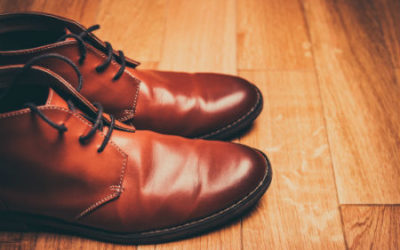Interested in Spanish-English fashion translation? Overwhelmed by all the different terms? There can be a lot to learn when it comes to fashion and tailoring. You need to know about fabrics and patterns, lapels, shoes, pockets and cuffs. To make things easier, here’s a guide to some common terms for pockets, cuffs and collars for Spanish-English fashion translators.
Pockets
First things first. When it comes to pockets (bolsillos), less is more. For blazers and jackets, the more formal they are, the fewer pockets they have. A tuxedo (smoking) will have at most three pockets. One on each hip and one on the chest.
The most formal type of pocket is a jetted pocket (bolsillo de ojal or bolsillo insertado). It can also be called a besom pocket or double–welt pocket. It looks like a slit with two thin strips of fabric or “welts” on either side. Sometimes the welts are in different fabrics, maybe satin (raso or satén).
Slightly less formal is a flap pocket (bolsillo con solapa or bolsillo con tapeta). It’s like a jetted pocket except that it has a fabric flap where the upper welt would be. Most business suits have flap pockets rather than jetted pockets.
A more casual pocket is the patch pocket (bolsillo de plastrón), which is formed by sewing a section of cloth onto the garment. You might see it on unstructured summer blazers.
Moving on down the formality scale, we have slant pockets (bolsillo al bies), the kind of pocket you might find on a pair of jeans. For really casual wear, like hoodies (sudadera con capucha) you could come across a pouch pocket (bolsillo canguro) across the front.
On a suit, you might include a pocket square (pañuelo) in the chest pocket.
“Most business suits have flap pockets rather than jetted pockets.”
Cuffs
As with pockets, there are different types of cuff (puño) which vary in formality and use. The most common style of cuff for shirts is the barrel cuff (puño sencillo). It’s so called as the material forms a cylindrical “barrel” shape.
Barrel cuffs can be rounded cuffs (puño redondo), square cuffs (puño recto) or mitered or angle cuffs (puño sesgado). With mitered or angle cuffs, the corners of the cuff are sewn at a 45-degree angle. I’ve also seen a mitered or angle cuff referred to in Spanish as a puño carrado and puño con corte inglete. Barrel cuffs are casual and can be worn with jeans or a blazer.
French cuffs (puño francés) are sometimes called double cuffs (puño doble) because they’re double the length of a normal barrel cuff. This means the cuff can be folded back and fastened with cufflinks (gemelos).
A turnback cuff (puño vuelto) is similar to the French cuff, but is fastened with a button instead of a cufflink. The turn back part is angled to show the buttons.
“The most common style of cuffs for shirts is the barrel cuff.”
Collars
I’m going to limit myself to shirt collars for this article, although the Spanish for collar (cuello) also encompasses what in English we would call necklines. The classic collar shape is the Kent collar, or classic collar (cuello clásico). It’s perfect for a business suit.
Turndown collars (cuello inglés) are a staple for men’s shirt collars, with the ends turning down to form a triangle. Spread collars (cuello italiano), on the other hand, have a more spread-out shape, showing more of the upper part of the shirt.
Cutaway collars (cuello cutaway), as the name suggests, are made at an angle that cuts away from your face, giving an even more spread-out shape. They’re suitable for all occasions, both casual and formal.
Know your jetted pockets from your spread collars? What about in Spanish? Read this post by @LucyWTranslator #t9n #xl8 Share on XA club collar (cuello club or cuello campeón) is a standard shirt collar with rounded edges. Although it can be worn casually, this type of collar is best for semi-formal wear.
Stand-up collars (cuello mao) are sometimes called band collars or Mandarin collars. I’ve found that global brands prefer the term “stand-up” collar over Mandarin so as not to cause offence in other markets. It’s essentially a band that wraps around the neckline with no tips.
For very formal occasions, we have the wing collar (cuello ópera). In fact, you’d only wear this with a bow–tie and tuxedo. The name comes from the points of the collar, which fold out like wings.
I hope this brief introduction has been useful. If you’d like to read more about fashion and men’s tailoring in particular, check out “Spanish-English Fashion Translation: Personal Tailoring” for more information about how to translate key terms.
Get our news!
Sign up for our newsletter and we’ll keep you updated on our posts, course promotions and the latest news in Spanish-to-English translation. Subscribe now.




0 Comments